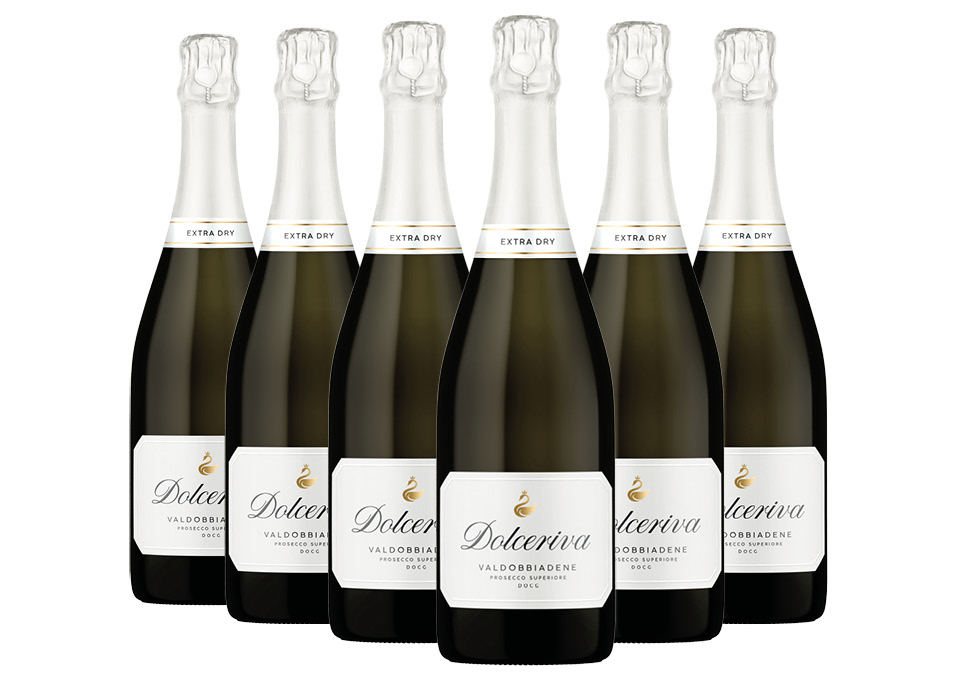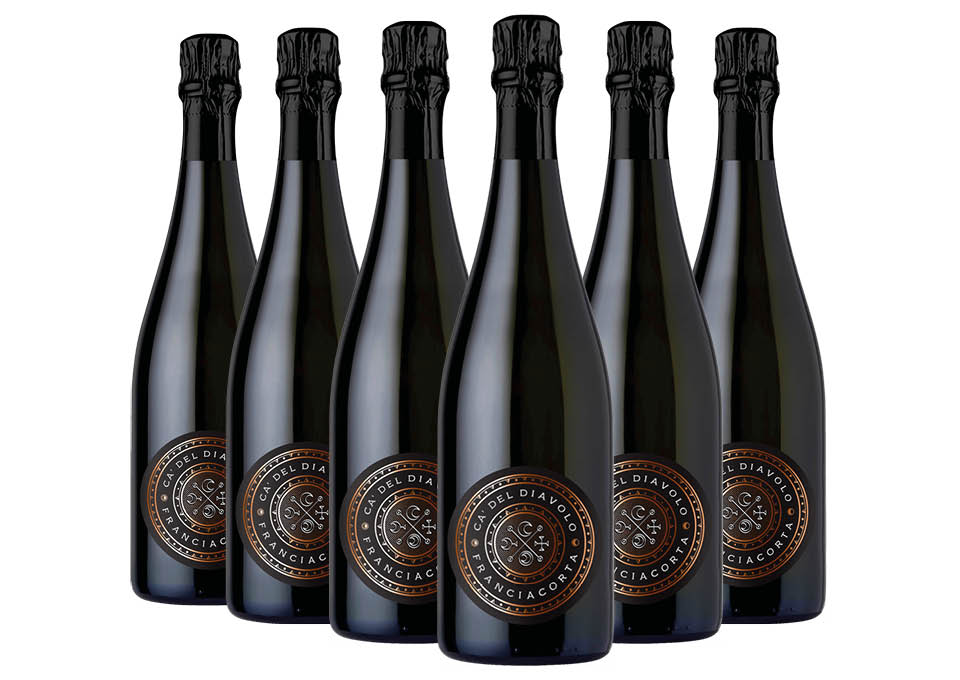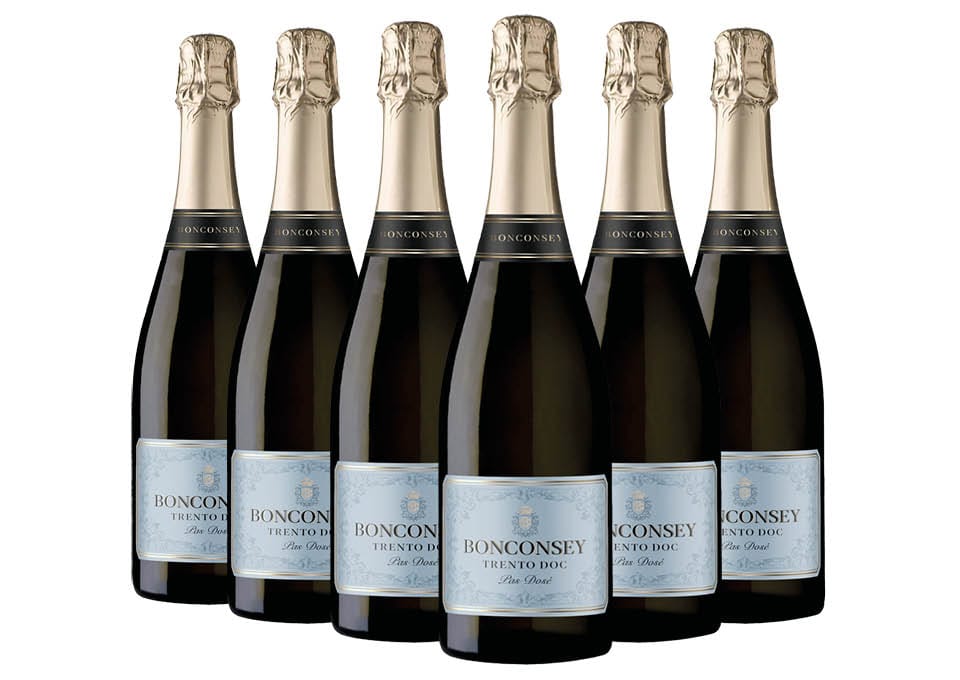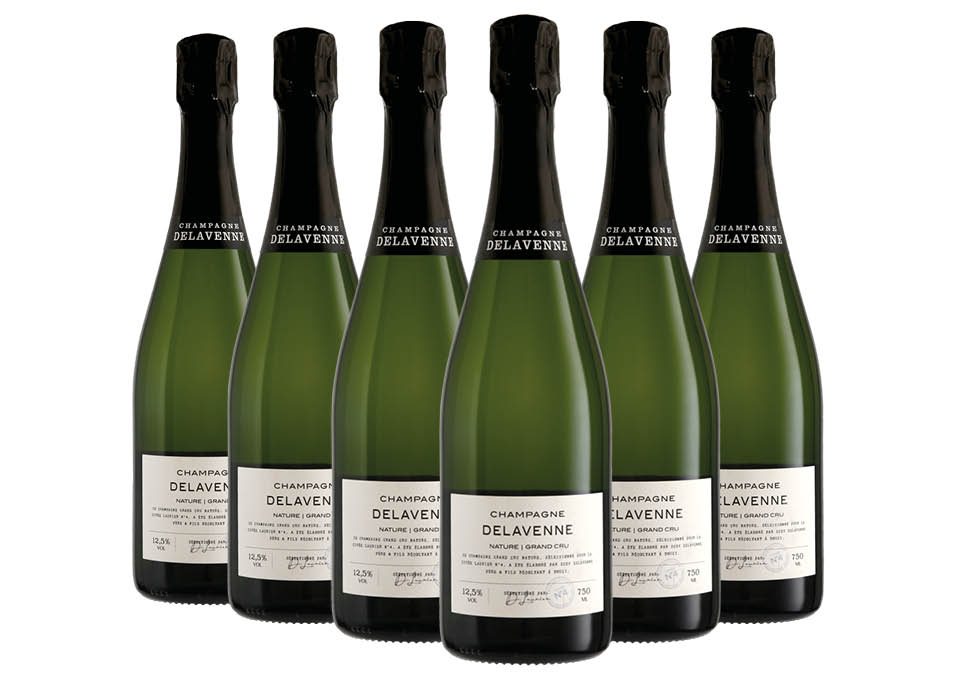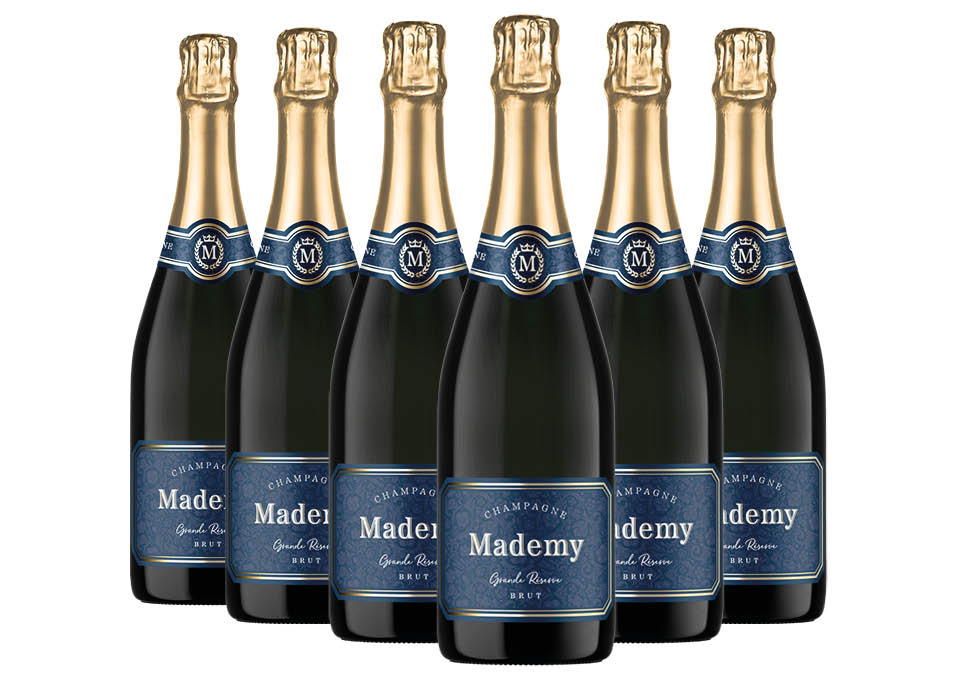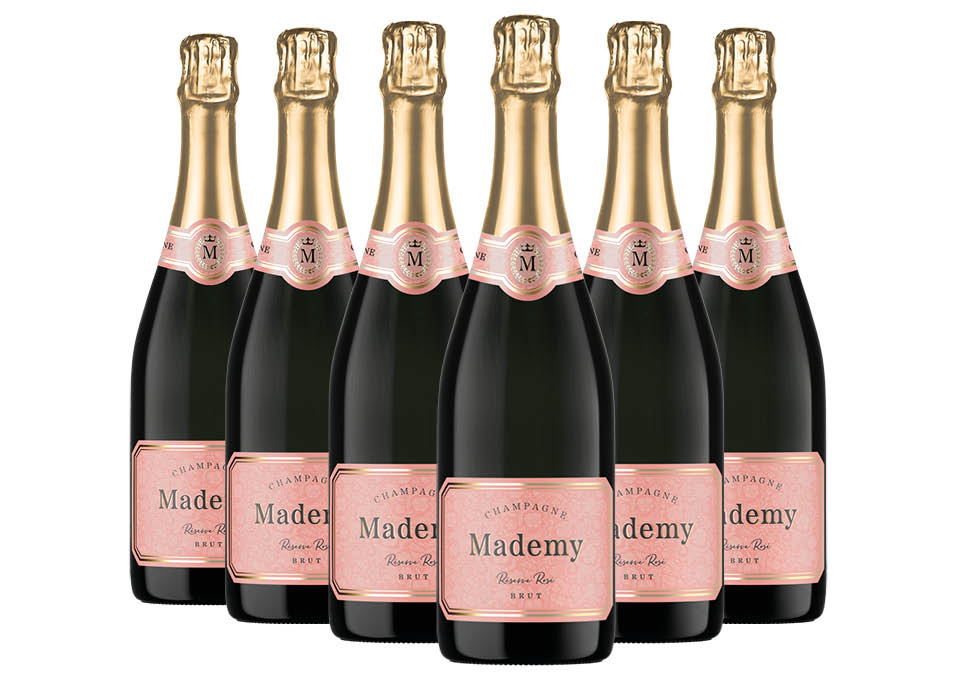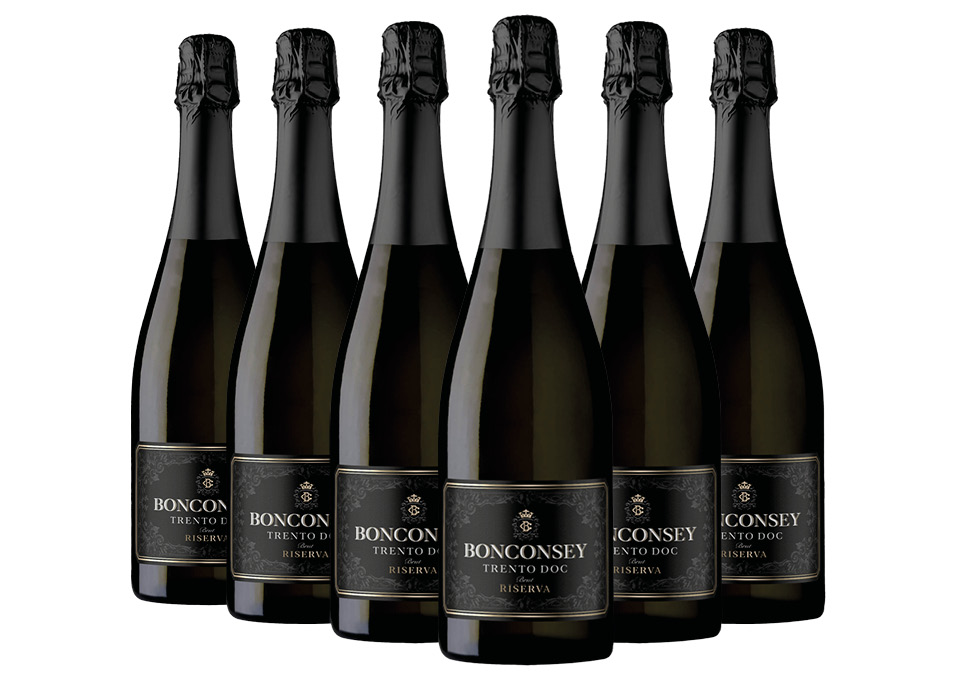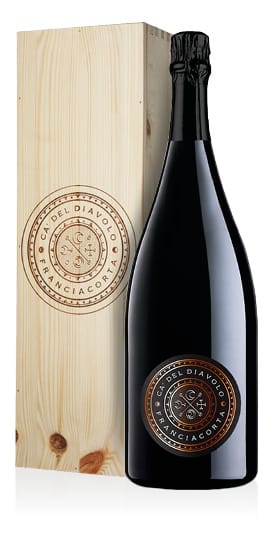Sparkling Wines, Champagnes and Prosecco
Depending on the dosage—Brut, Extra Dry, Sec, Demi-Sec, or Sweet—sparkling wines can be paired with a variety of dishes, from aperitifs to desserts, enhancing the aromas and flavours of finger food, cheeses, cured meats, meat, fish, shellfish, as well as fruit and sweets. Why open a bottle of sparkling wine only for celebrations and special occasions? It is not yet common practice to welcome a friend with a glass of Champagne, Franciacorta, Prosecco, or any other white or rosé sparkling wine and to accompany a meal with a quality bottle to make the dining experience even more enjoyable.
The pop of the cork, the sensation of bubbles on the palate, the fine perlage, the luminous colours, and the unmistakable elegant aromas make sparkling wine the perfect drink for sharing moments of joy and conversation with friends. The synergy of its elements brings a cheerful mood to the table. Furthermore, its structure enhances the flavours of food by cleansing the taste buds, allowing dishes to be fully appreciated. Additionally, there is a growing trend of creating cocktails based on sparkling wine, Prosecco, or even Champagne, making them ideal for an aperitif with company.
To select the best sparkling wine for your cellar, it is important to consider the ageing period on lees, the dosage, effervescence, acidity, alcohol content, and its smoothness—its roundness on the palate—all elements that give each of these wines its unique taste.
Origins
The high-quality sparkling wines we know today originated in France in the late 1600s in the Champagne region.
Legend has it that Champagne, the ancestor of the fine bubbles so appreciated today, was invented in the 17th century by Dom Pierre Pérignon (after whom the famous Dom Pérignon Champagne is named), a cellar master at the Benedictine Abbey of Hautvillers. However, reality does not always match the myth; in fact, sparkling wine and the process of making it had already been documented in previous centuries by a Benedictine monk.
What is certain is that the experiences and discoveries of the winemakers in Champagne were codified in the famous Méthode Champenoise, which allowed still wine to be transformed into sparkling wine through the addition of yeast and sugar. In those bottles that withstood the high carbon dioxide pressure, a highly appreciated wine developed. Over time, winemakers perfected the method, which soon spread worldwide.
Traditional Method Production
The colours, ranging from pale straw yellow to golden hues, the intense and complex aromas reminiscent of yeast, bread, flowers, fresh or dried fruit, brioche, or biscuits, the elegant flavours, the structure, and the long aromatic persistence are all distinctive traits of the finest expressions of the Traditional Method.
Everything must be done with the utmost precision, starting with the base wines: the ideal grape varieties for making base wines suitable for the Traditional Method include Chardonnay, Pinot Noir, Pinot Blanc, and Pinot Meunier. The cuvée is the skilful blend of base wines in varying proportions, chosen by the winemaker depending on the sparkling wine they aim to produce. By selecting wines from different vintages stored for their quality and prestige, a final cuvée is created. If composed mainly (at least 85%) of wines from the same vintage, it results in a prestigious millesimato, with the vintage year displayed on the label. If wines from multiple vintages are used, the result is a sans année, a non-vintage sparkling wine with a shorter lees ageing period compared to the 4–8 years required for millesimato wines.
Once the cuvée is created, the liqueur de tirage is added—a blend of wine, a precise amount of cane sugar, yeast, and minerals. This mixture slowly generates the bubbles. The amount of sugar in the liqueur de tirage is a crucial factor as it determines the final pressure. Typically, it is around 24 g/l (for Satèn Franciacorta, for instance, the final pressure is lower, as the sugar content is reduced to 18 g/l).
Once the liqueur de tirage is fully integrated into the cuvée, the wine is bottled in traditional Champagne bottles, designed to withstand internal pressure and prevent breakage. (Even the colour of the glass serves a purpose: dark green, brown, or nearly black bottles protect the wine from light, which could trigger oxidation.) At this stage, bottles are temporarily sealed with a crown cap made of stainless steel to prevent rust formation due to the humidity in cellars during fermentation.
Stored undisturbed, away from vibrations, noise, heat, and light, and with appropriate humidity levels, the wine begins the slow process of fermentation in horizontally positioned bottles, in cellars or climate-controlled rooms at 10–12°C. It takes around six months for the yeast to convert the sugar into carbon dioxide, ethyl alcohol, and various secondary compounds that enrich the sparkling wine with aromas and flavours. However, the lees ageing time varies from 18 to 36 months, extending up to 7–8 years for some exceptional wines.
Charmat Method Production
To speed up production and reduce the previously high costs, Italian winemaker Federico Martinotti conceived the idea of sparkling the wine in a large pressurised tank, a technique later refined by French engineer Eugène Charmat.
This method is often used to produce sweet sparkling wines, as it helps preserve the fruity and aromatic qualities of the grapes. As in the Traditional Method, the cuvée is prepared using carefully selected base wines following the winemaker’s instructions. The key difference lies in the fermentation process, which takes place in autoclaves: large stainless steel tanks equipped with a double wall and temperature control systems. Here, after preparing the pied de cuve—a mixture of selected yeasts, sugars, and minerals to stimulate fermentation—the second fermentation occurs. The Martinotti (Charmat) Method significantly shortens fermentation times, allowing the sparkling wine to be ready for sale within a few months.
Grapes
Grape selection depends on the desired style of sparkling wine.
Aromatic grape varieties are ideal for producing sweet sparkling wines. White Muscat, Malvasia, and Brachetto are commonly used for sparkling wines made with the Martinotti Method, which enhances their natural fragrance.
The best grapes for the Traditional Method include Chardonnay, renowned for its versatility and ability to produce wines with excellent structure, acidity, elegance, and finesse. Pinot Noir, a black grape vinified as a white wine, is used for both single-varietal sparkling wines and blends, contributing power, body, persistence, and structure. Pinot Blanc and Pinot Gris offer subtle aromas, delicate acidity, and moderate structure.
Buying sparkling wine online
If you want to buy sparkling wines online, you’re in the right place! Vino.com offers a vast selection of Sparkling Wines, Champagne, and Prosecco. To refine your search, use our Virtual Sommelier: choose your bubbles based on the dishes you plan to pair them with. You’ll discover that not all sparkling wines are suitable for desserts. That’s why our experts have selected the best Sparkling Wines, Champagne, and Prosecco for pairing with dry pastries and baked goods. In addition to food pairings, you can filter products by designation, from well-known ones like Trento DOC to more niche choices like Colli Euganei DOCG, selecting by grape variety and other characteristics.
The final cuvée is obtained from different wines from previous vintages, stored for their quality and prestige. If composed by elaborate wines from grapes of the same harvest or for at least 85 percent, cuveé becomes the famous millesimé, whose age will be on the label. On the other hand, if wines from previous vintages are used the sans année is obtained, sparkling wine with no vintage indication, undergoing yeast ageing process shorter than the 4-8 years of the millesimé.
Once the cuvée is created, the liqueur de tirage is added, made out of wine and exact cane sugar amount, yeasts and mineral substances. Thanks to this special liqueur, bubbles will slowly start forming. Sugar quantity in the liqueur de tirage is a fundamental element determining the final pressure. It normally should be around 24 g/l (in the case of the Satèn Franciacorta, in fact, the final pressure is lower because sugar quantity is reduced to 18 g/l).
After making sure that liqueur de tirage is totally amalgamated in the cuvée, wine can be bottled in the traditional champagnotte bottle, designed to decharge internal pressure and avoid popping. (Even glass colour has its functions: dark green, dark brown or almost black to protect wine from the action of the light that could activate oxydation phenomena). In this phase, bottles are sealed with a stainless steel bidule, to prevent rust formation during fermentation due to moisture.
In the absence of vibrations, noises, heat, light and with an adequate level of moisture, wine slowly starts fermenting in bottles placed in an horizontal position, in cellars or thermoconditioned locals at a temperature of 10-12°C. After 6 months yeasts will transform sugar into carbon dioxide, etilic alcohol and many other secondary substances enriching the sparkling wine with tastes and flavours. Ageing on yeasts period varies from 18 to 36 months to 7-8 years for great sparkling wines.
At the end of ageing, bottles are placed on special tripods, called pupitre. Here, remuage occurs, (now more and more mechanized), a method through which experts place the bottles in a vertical position, carefully shaking them to provoke separation of the residuals and conglomerates of yeasts from the walls and bottle cork.
Residuals are then eliminated through degorgement à la glace or dégorgement: bottle neck is immersed for a few minutes in a salt solution, at very low temperature (reaching -30 °C) until an ice cylinder of a few centimeters incorporates residuals. Once the bottle is uncorked, internal pressure expels iced residuals, leaving the wine perfectly transparent. Dégorgement was once made à la volée, so the bottle was set upright until the air bubble reached bottle neck and only at that point the cork was uncorked so that the air bubble expelled the residuals. However, this spectacular method could not guarantee correct waste disposal.
Dosage phase is not the last and consists of adding a syrup, the liqueur d'expédition, made by producer and is composed by more or less aged wine, cane sugar and sometimes even a spirit or brandy, depending on to the product one wants to obtain.
After this, the final corking with the traditional mushroom-shaped cork and with the typical wire hood, the label and ageing.
Production method: Charmat Method or "Metodo Martinotti"
To make production faster and reduce the costs, the Italian Federico Martinotti, came up with the idea of making sparkling wine in a air tight container, that he designed together with French engineer Eugène Charmat.
This method is often used to make sweet sparkling wines, allowing to maintain fruity and aromatic characters of the grapes used. Just like in the Metodo Classico, cuvée is made with base wines that are put together as suggested by a wine expert. The main difference is in fermentation in the autoclaves: big stainless steel containers with double walls and machines for controlling wine temperature. At this point pied de cuve is prepared, which is a base made of selected yeasts, with the addition of sugars and mineral salts facilitating yeasts development and activity. After this, a second fermentation happens. With the Martinotti (Charmat) method, fermentation times are shorter and within a few months sparkling wine is ready to be put on the market.
Grapes
Grape choice should be made according to the results one wants to achieve.
Aromatic grapes are ideal for sweet sparkling wines production. White muscat, malmsey and brachetto are the most used for complex sparkling wines, generally made with the Martinotti method.
Grapes that are more suitable for making sparkling wines with the Metodo Classico are chardonnay, able to handle all kinds of pedoclimatic conditions, often used as a monogrape, with good structure and acidity and above all elegance and fineness; pinot noir, black berried grape vinified in white for the making of sparkling wines in purity and of many cuvée, to which it gives strength and body, persistence and structure; pinot blanc and pinot gris with tender aromas, reduced or delicate acidity levels and structure.
Black berried pinot meunier is only used in Champagne due to its resistance and adaptability to difficult climate conditions of the area.


